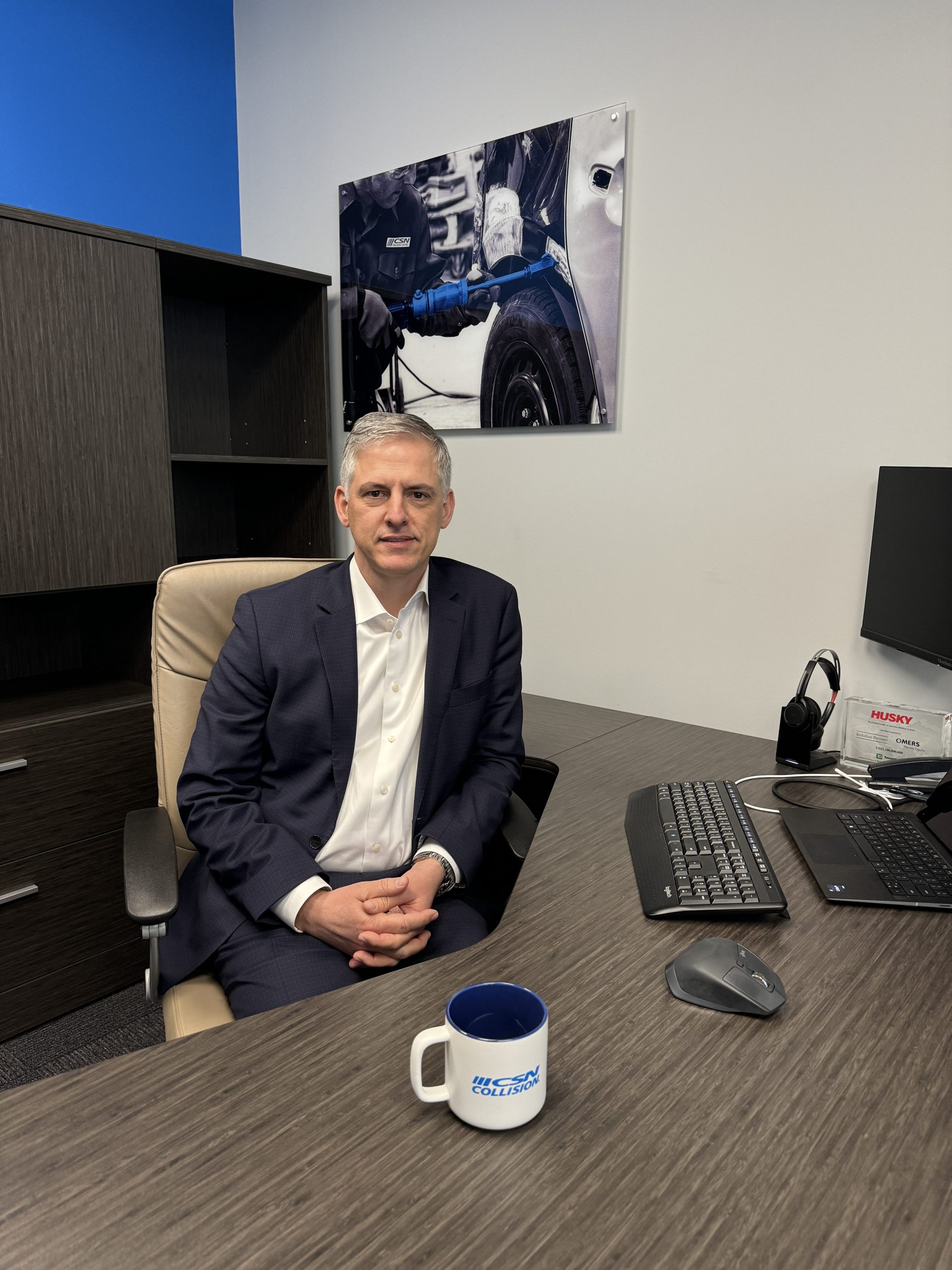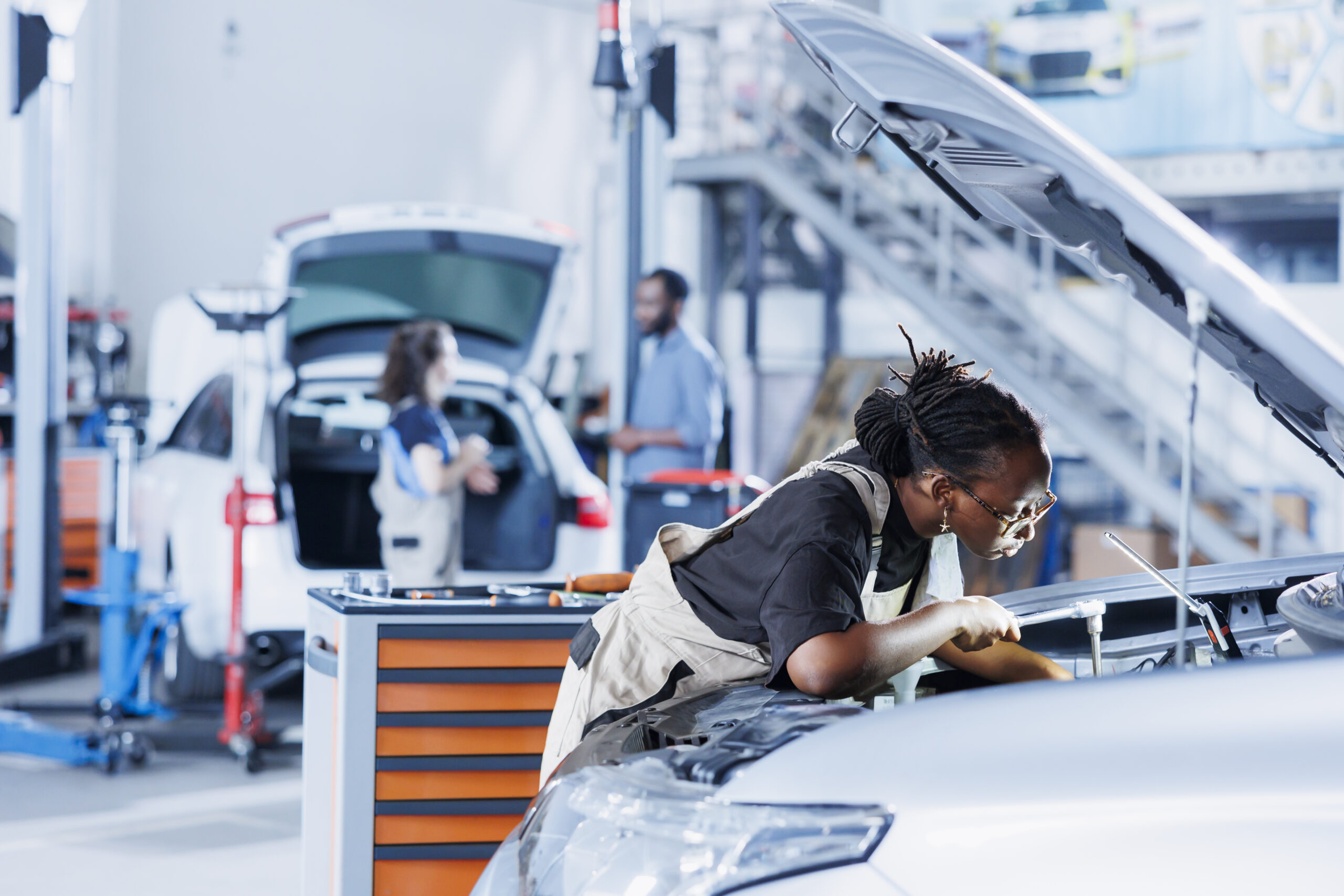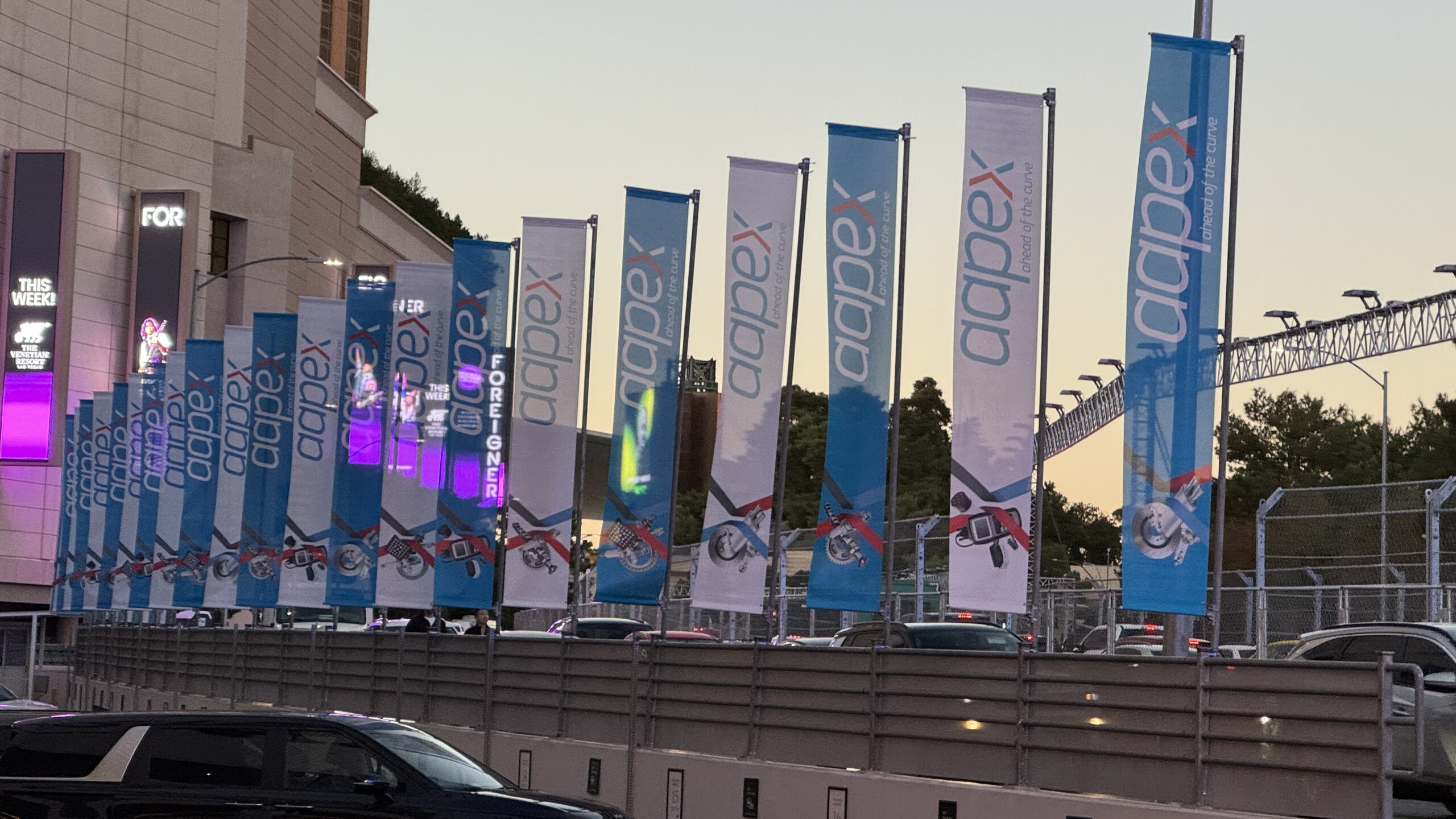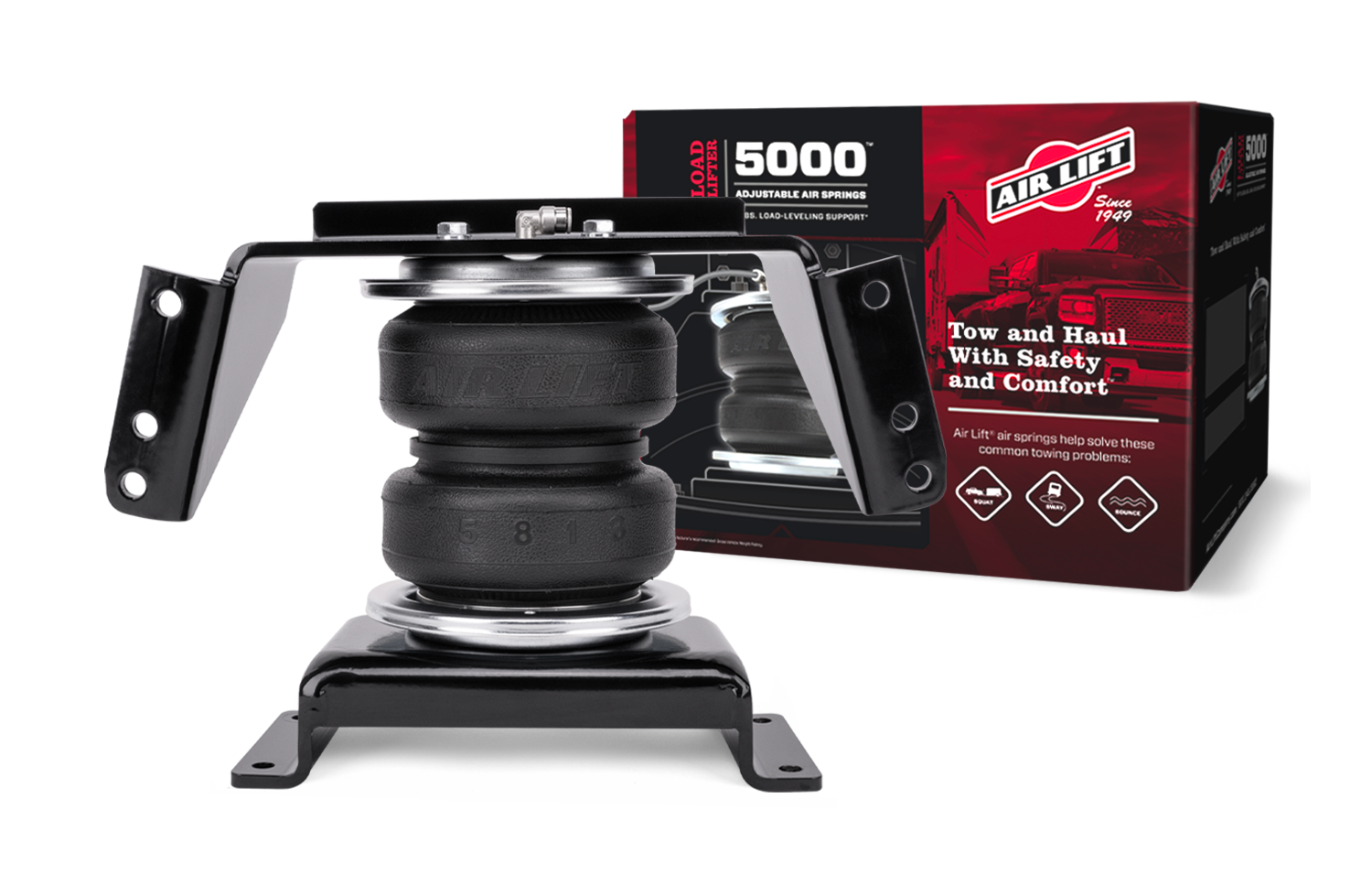
If there ever was someone who grew up in the auto care industry, it’s Ryan Bruno. With a rich family history on the collision side of the automotive aftermarket, Bruno brings a unique perspective to his upcoming role as chair of the Automotive Industries Association of Canada.
His experience is deeply rooted in hands-on work from his formative years in the family shop to his broad experience across different sectors, such as banking, telecom and insurance, in areas that include policymaking and mergers and acquisitions advisory.
As the landscape of the automotive aftermarket continues to shift, Bruno is focused on leveraging his skills to foster change and innovation in this industry.
The journey
Bruno’s path to leadership in the automotive industry was anything but linear. Starting from humble beginnings in his family’s collision shop, which opened about 50 years ago, he learned the ropes of the business from a young age.
He got his first paycheque at eight years old. But he’ll admit that he wasn’t technically adept like the rest of his family.
“I have three brothers and a couple of them are a bit more technically oriented,” Bruno said. “They could fix a car — I couldn’t.”
He hung around the shop and helped out where he could. But he often found himself working in the office rather than on the shop floor. As time went on, Bruno learned how to negotiate with insurance companies and manage workflow. He found that side of the business more interesting than school. So he hit the pause button on education and actively started managing the family business.
Bruno’s father and three partners started CSN Collision Centres. He’s now the president of the company but he didn’t stick around for too long at first.
“I wasn’t a tradesperson,” Bruno said. “So I thought, ‘You know what, I should probably go back and finish my education.”
While he intended just to get a piece of paper saying he finished school and then return to CSN, he found all the things he’d learned in the collision business served him well in university, like working under pressure and with different stakeholder groups.
It turned out that he found the business world interesting. He had a stint with the Bank of Canada where he helped shape policy rate decisions and did M&A advisory in the banking world, working with private equity clients, and continuing in that area in the telecom industry. He then went to work for an insurer where he handled investor relations and broker investments.
Then Bruno got a call one day from one of CSN’s partners. They wanted to bring him back into the fold. For someone who grew up in the industry and being part of the company’s beginnings, he couldn’t say no to returning to his roots.
His journey underscores a theme prevalent in many aftermarket careers: The magnetic pull of the industry that often brings individuals back, enriched with broader experiences and new ideas.
“I think for a lot of people, when you’re part of this business, it’s part of you,” Bruno said.
It was always in his mind that he’d come back to the aftermarket — after all, that was his plan when he went back to school. He just didn’t think he’d go on a longer journey. And that journey is one that he’s thankful for.
“There was an opportunity to learn a bit more … before coming back,” Bruno said. “And it just had to be the right time and also the right opportunity and everything else.”
Addressing challenges and opportunities
Returning to the auto care sector, Bruno brought a wealth of knowledge and fresh perspectives with him. He aims to keep looking at things from a holistic, big picture point of view, especially being the first AIA Canada chair with a collision-focused background in about a decade.
He didn’t understand the role AIA Canada played in collision until he got more involved with the group. In fact, he at first didn’t think there was a national association representing the collision industry. Bruno now understands that there is and has been one for a long time. He wants to spread the awareness of AIA Canada further.
“My assumption that the collision industry didn’t have a national association was incorrect. And the problem wasn’t that it didn’t exist — the problem was that there was not enough engagement from the collision industry with AIA Canada,” Bruno said.
And that’s important because there are many lessons the collision side can share with the mechanical side. It’s the collision repairers who generally see newer vehicles before they hit the aftermarket sweet spot, which is when they leave dealership bays after the warranty period for independent shops for maintenance and service. And it’s not uncommon for a repairer to do, say, suspension work. So they can come across tasks, issues and information that can help other areas of the industry.
“The aptitude is similar, sometimes the work is similar, but the market environment is very different,” Bruno observed.
Under his guidance, Bruno aims to bridge the gap between the mechanical and collision sides of the industry, fostering a more integrated approach to automotive repair and service.
“Why can’t you take something that’s evolved over here organically but take that concept and bring it to the other side, or vice versa?” he asked.
Customers shouldn’t experience wildly different outcomes based on which shop they visit.
Talent and standards
One year in the grand scheme of things isn’t very long to affect change. Instead, it’s about building on what his predecessors have done and setting things up for the next person who fills the seat.
“It’s really just continuing down go down that path that we’ve been on,” Bruno said. “I would say not a ton of change but just continuing to make sure that things are continually progressing.”
Bruno is particularly passionate about tackling the industry-wide issue of labour shortage. He advocated for a strategic approach to attracting and retaining skilled labour, focusing not only on immediate solutions but also on addressing the root causes of the labour crisis.
“It’s a critical issue today — we’re not going to fix it today. But if we take the right steps today, we might be able to help it,” Bruno said.
It comes down to the ‘why’ of the issue. People say it’s not an attractive profession — why? Trades professionals are leaving the profession — why? And so on. By questioning the ‘why’ behind current challenges, he believes the industry could uncover deeper insights that can lead to more effective, long-term strategies.
For example, rather than looking at the ease of getting into the industry — there are programs, courses and training available — an issue might be the perceived standards of the industry that are turning people off.
“Maybe what we need to do is we need to raise the bar in terms of standards,” Bruno suggested, emphasizing the importance of standardization and certification to elevate professional standards across the industry, thus improving consumer trust and safety.
 The vast majority are doing things by the book as they should be but there’s a pocket that is not, he suggested. They’re tarnishing the rest of the good apples.
The vast majority are doing things by the book as they should be but there’s a pocket that is not, he suggested. They’re tarnishing the rest of the good apples.
“Is that what is causing the lack of people coming in?” Bruno wondered. “So I think spending a bit more time to get to the root cause and understand, ‘What is the root cause?’ And what we might find is that, as an industry, maybe we actually have more control than we think in improving that.”
Could that mean a greater effort toward industry standards set by the industry itself? Standardization, Bruno argued, across all repair sectors could boost consumer confidence through consistent quotes and work quality. Mandatory certification programs and skills assessments may help elevate baseline competencies.
“Customers shouldn’t experience wildly different outcomes based on which shop they visit,” he observed.
This is something AIA Canada has been working on with the collision side in recent years. And it’s important. If the industry doesn’t take hold of setting standards, it could be left to outside parties to set them instead, Bruno warned.
He used environmental sustainability as another example of an opportunity for the aftermarket to decide for itself what works best, rather than regulators stepping in and creating their own with disregard to how they may impact the aftermarket from top to bottom.
“If we lead the way on issues like reducing waste and energy use, we maintain control over our destiny,” Bruno explained.
This is where AIA Canada is well-positioned to provide guidance and best practices, allowing shops, distributors and jobbers to gradually implement profitable changes. Without co-ordinated industry action, Bruno warned external mandates could undermine competitiveness.
We often hear that, ‘Today, things are changing faster than they ever have.’ But my view is actually to look at it a bit differently and say, ‘Things are changing at a slower pace today than they ever will again.
Leading through change
Bruno admitted he wasn’t all that aware of AIA Canada and its purpose until he joined the association. How many others are currently in the same boat he was?
It comes down to awareness and asking the industry how the group can help them, Bruno said. Whether it’s creating awareness of an issue, helping them not feel overwhelmed or identifying a business opportunity, AIA Canada can play a role for its members. The message needs to get out.
“Sometimes we need to push people. Sometimes we need to push ourselves,” Bruno said.
And relevance will be important with so much change on the industry’s doorstep. Bruno doesn’t see change as a challenge though. He sees everything as an opportunity.
“We often hear that, ‘Today things are changing faster than they ever have,’” Bruno said. “But my view is actually to look at it a bit differently and say, ‘Things are changing at a slower pace today than they ever will again.’”
So the industry needs to embrace change. “Because if we’re not embracing that change, we’re resisting it,” Bruno said.
Take electric vehicles. Rather than dwell on the challenges they present, he sees the business opportunities that are being created, such as higher-margin jobs and cleaner work.
Even in gas-powered vehicles, he pointed to all the electronic components they have these days. “I don’t think there’s too many newer cars where you’re doing engine overhauls,” Bruno said. There’s opportunity to expand service offerings.
He brought up operational changes that can benefit a shop, such as cutting back on energy usage — if a shop can find ways to be more environmentally friendly, the return on investment can be great. Plus, to his earlier point, doing so would get the industry ahead of government requirements that come down the line.
“With all these changes, there’s new opportunity,” Bruno said. “And I think it’s an exciting time.”
This piece originally appeared in the March/April issue of Jobber News












Leave a Reply